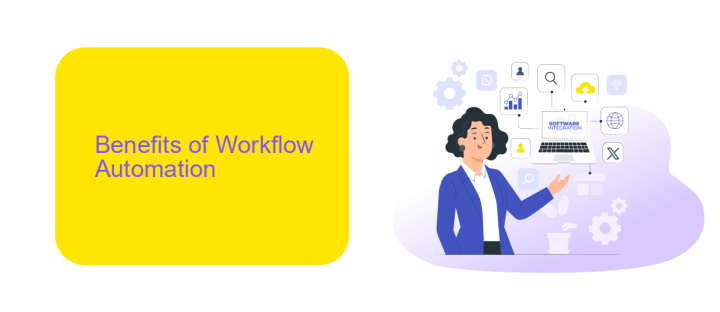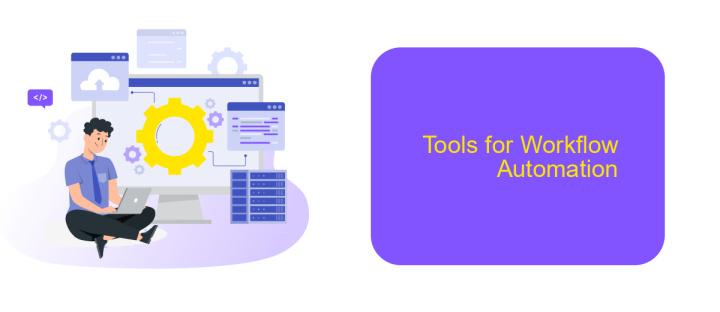Workflow Automation
In today's fast-paced business environment, workflow automation has become a crucial tool for enhancing productivity and efficiency. By streamlining repetitive tasks and minimizing human error, automation enables organizations to focus on more strategic activities. This article explores the key benefits of workflow automation and provides insights on how to successfully implement it within your business operations.
Introduction
Workflow automation is revolutionizing the way businesses operate by streamlining processes, reducing manual tasks, and enhancing overall efficiency. This technology allows organizations to automate repetitive tasks, ensuring consistency and accuracy while freeing up valuable time for employees to focus on more strategic activities.
- Improved productivity by eliminating manual tasks
- Enhanced accuracy and reduced human error
- Seamless integration with existing systems
- Real-time monitoring and analytics
One of the key aspects of successful workflow automation is the ability to integrate various applications and services seamlessly. Tools like ApiX-Drive play a crucial role in this process by providing a platform that connects different software solutions, enabling smooth data flow and communication between systems. By leveraging such integration services, businesses can achieve a more cohesive and efficient operational environment.
Benefits of Workflow Automation

Workflow automation significantly improves efficiency by streamlining repetitive tasks, allowing employees to focus on more strategic activities. This leads to increased productivity and reduced errors, as automated processes are less prone to human mistakes. Additionally, automation provides real-time tracking and analytics, offering valuable insights into business operations and enabling data-driven decision-making.
Another key benefit is the seamless integration of various tools and platforms. Services like ApiX-Drive facilitate the connection between different systems, ensuring smooth data flow and enhancing overall operational efficiency. This not only saves time but also reduces the complexity associated with managing multiple applications. Ultimately, workflow automation helps businesses scale more effectively, adapt to changing demands, and maintain a competitive edge in the market.
Types of Workflow Automation

Workflow automation can significantly enhance productivity by streamlining repetitive tasks and processes. There are various types of workflow automation that businesses can implement to optimize their operations.
- Task Automation: This type involves automating individual tasks within a process, such as sending emails or generating reports.
- Process Automation: This involves automating entire workflows, such as onboarding new employees or processing customer orders.
- Integration Automation: Tools like ApiX-Drive facilitate the integration of various apps and services, allowing for seamless data transfer and communication between different platforms.
- Robotic Process Automation (RPA): This uses software robots to perform high-volume, repeatable tasks that were previously done by humans.
- Document Automation: This focuses on automating the creation, management, and storage of documents, making it easier to handle large volumes of paperwork.
Each type of workflow automation serves a unique purpose and can be tailored to meet the specific needs of a business. By understanding and implementing these types, companies can achieve greater efficiency and reduce the likelihood of human error.
Tools for Workflow Automation

Workflow automation tools are essential for streamlining business processes, reducing manual effort, and increasing efficiency. These tools can handle repetitive tasks, allowing employees to focus on more strategic activities. By automating workflows, organizations can improve productivity and reduce the risk of human error.
There are numerous tools available for workflow automation, each offering unique features and capabilities. Selecting the right tool depends on the specific needs and requirements of your organization. Some tools are designed for general workflow automation, while others are tailored for specific industries or tasks.
- Zapier: Connects various apps and automates workflows without coding.
- ApiX-Drive: Facilitates integration of different services and automates data transfer between them.
- Trello: Manages projects and tasks with visual boards and automation features.
- Microsoft Power Automate: Automates workflows within the Microsoft ecosystem and beyond.
- Integromat: Connects apps and automates complex workflows with a visual builder.
Choosing the right workflow automation tool can significantly impact your business operations. Tools like ApiX-Drive make it easier to integrate various services and automate data flow, enhancing overall efficiency. Evaluate your needs and explore different options to find the best fit for your organization.
Best Practices for Workflow Automation
Implementing workflow automation requires meticulous planning and execution. Begin by identifying repetitive tasks that consume valuable time but do not require human intervention. Create a detailed map of your current processes to understand where automation can be most effective. Start small by automating simple tasks first and gradually move on to more complex processes. This approach allows your team to adapt to new systems without overwhelming them.
Integrating various tools and platforms is crucial for seamless workflow automation. Use services like ApiX-Drive to connect different applications and automate data transfer between them. This not only reduces manual input but also minimizes errors. Regularly monitor and evaluate the performance of your automated workflows to ensure they are delivering the desired results. Make necessary adjustments and updates to keep the system efficient and aligned with your business goals. Continuous improvement and adaptation are key to successful workflow automation.
FAQ
What is workflow automation?
How can workflow automation benefit my business?
What types of tasks can be automated?
How do I get started with workflow automation?
Is it difficult to set up workflow automation?
Do you want to achieve your goals in business, career and life faster and better? Do it with ApiX-Drive – a tool that will remove a significant part of the routine from workflows and free up additional time to achieve your goals. Test the capabilities of Apix-Drive for free – see for yourself the effectiveness of the tool.

